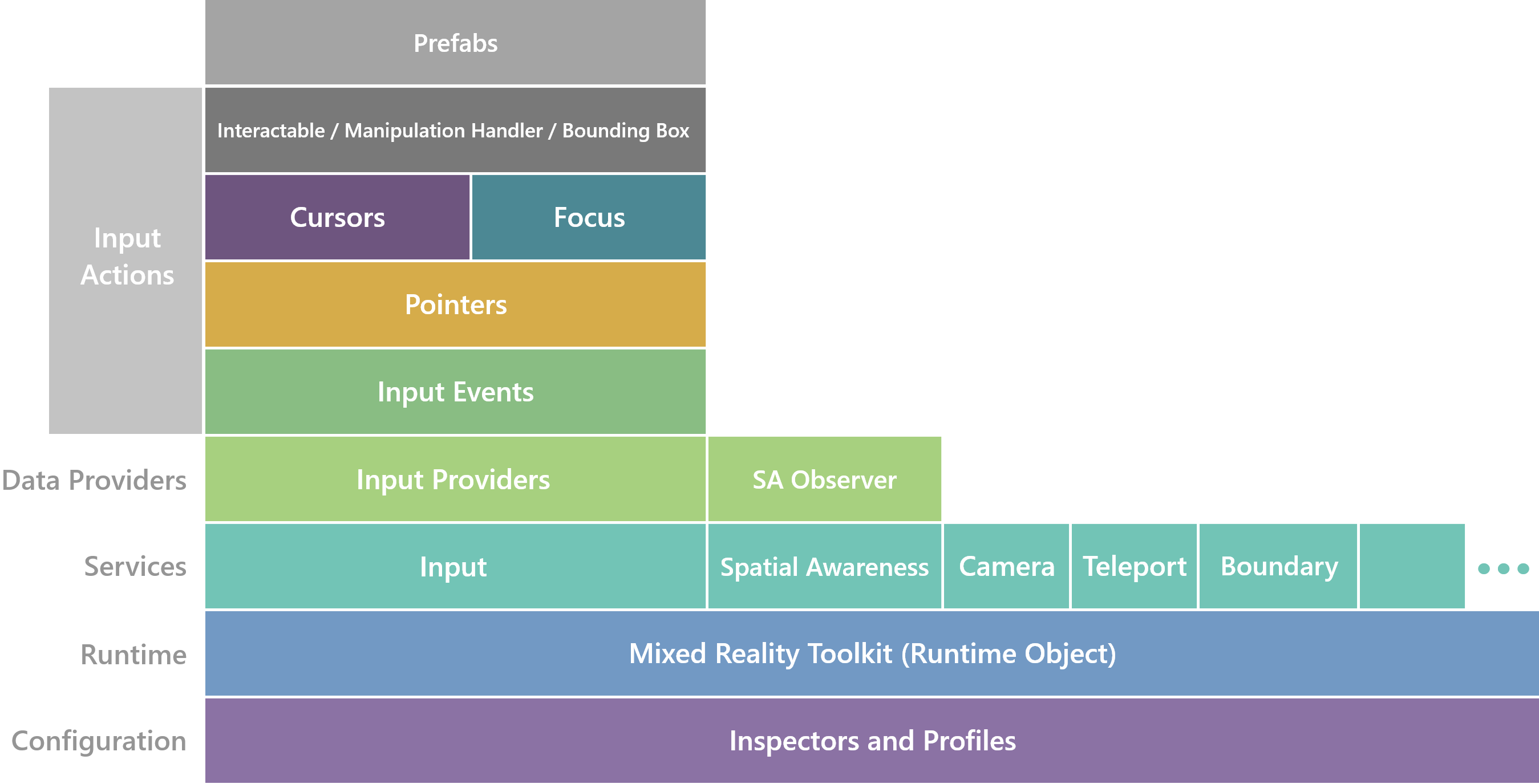Architecture overview
For an overall introduction to the contents of MRTK, the architecture information contained in this document will help you understand the following:
- Large pieces of MRTK and how they connect
- Concepts that MRTK introduces which may not exist in vanilla Unity
- How some of the larger systems (such as Input) work
This section isn't intended to teach you how to do tasks, but rather how such tasks are structured and why.
Many audiences, one toolkit
MRTK doesn't have a single, uniform audience. It's been written to support use cases ranging from first time hackathons, to individuals building complex, shared experiences for enterprise. Some code and APIs may have been written that are optimized for one more than the other (i.e. some parts of the MRTK seem more optimized for "one click configure"), but it's important to note that some of those are more for historical and resourcing reasons. As MRTK evolves, the features that get built should be designed to scale to support the range of use cases.
MRTK also has requirements to gracefully scale across VR and AR experiences. It should be easy to build applications that gracefully fallback in behavior when deployed on a HoloLens 2 OR a HoloLens 1, and it should be simple to build applications that target OpenVR and WMR (and other platforms). While at times the team may focus a particular iteration on a specific system or platform, the long term goal is to build a wide range of support for wherever people are building mixed reality experiences.
High level breakdown
The MRTK is both a collection of tools for getting mixed reality (MR) experiences off the ground quickly, and also an application framework with opinions on its own runtime, how it should be extended, and how it should be configured.
At a high level, the MRTK can be broken down in the following ways:

The MRTK also contains another set of grab-bag utilities that have little to no dependencies on the rest of the MRTK (to list a few: build tools, solvers, audio influencers, smoothing utilities, and line renderers)
The remainder of the architecture documentation will build bottom up, starting from the framework and runtime, progressing to more interesting and complex systems, such as input. Please see the table of contents to continue with the architectural overview.